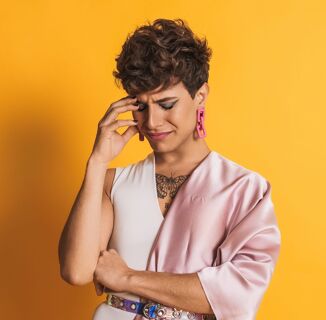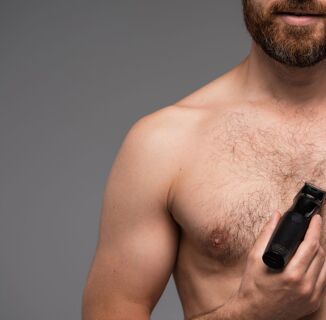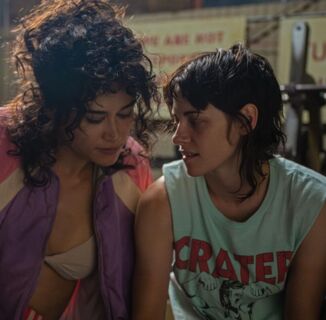“the West is not in the west, it is a project, not a place” –Edouard Glissant
This is a story about the ghost of white heteropatriarchy.
Individual pain becomes group pain becomes world of pain. I am on a sailboat for four weeks. Me, my brother, and my best friend Chelsea. We bought our tickets together in her office on our credit cards, the money equal to 10 days of work. We are adjuncts so we have breaks of time, large chunks of it, where we throw ourselves into anything.
I never get used to the rocking of the boat, the creaks of the mast, the splashing. It is my brother’s boat–he makes us call him captain. I know I won’t have reception often, so on the first day I text my Evangelical parents to tell them I am dating a woman–I, their daughter, am a lesbian–and turn off my phone.
It is night and the boat is rocking and I cannot sleep. Chelsea is outside sleeping on the net; I am in the hole. I emerge from the hole to sit, air on my face. I hope the rocking will stop. They say staring at the horizon will stop the nausea. I’m almost puking and I cannot see the horizon. Alone on the ocean at night is a darkness darker than darkness. I am watching Chelsea sleep in her sleeping bag when a wave washes over her body, waking her. She is startled. She rises, her nightgown is sticking to her body. The ocean big and terrifying and wet, the energy constant and moving.
As we approach, we see it. It is distant but becoming closer. We have been sailing for eight hours and I am wet everywhere the salt cracking my skin increasing eczema, my skin made fragile by salt, wind, and rare labor. We open the jib, we close the jib, we motor, we sail, we aim towards Little San Salvador Island, 100 miles southeast of Nassau. There is a law in the Bahamas that you can go to any island up to where the water touches during high tide. This means at low tide we can sit on any beach we desire.

In 1996 Holland America Line purchased Little San Salvador and renamed it Half Moon Cay after the only part of the island people now go to, the part that looks like a moon. Half Moon Cay is also a nod to the ship Half Moon that explored New York whose crew named the Hudson river after their captain, Henry Hudson. Every other day a cruise ship arrives to Half Moon Cay, filled with tourists ready for their time on their very own private island. Guests spend the night on their ship and line up for the first tender boat ashore at 10:00am. The last tender back to the boat leaves at 3:30pm. Five and a half hours to relish in the amenities, get your land legs back, and drink.
I have only seen water and the horizon and the sky for hours. I am made delusional by the lack of things, we put out the lines and catch no fish. Everything smells like water and salt and I think the same thought over and over and I write it in my journal over and over without noticing that I have written the same sentence three times. I run out of words to describe the water, but when we are on the open sea it gets dark. I’m never scared because I am with my capable brother, but I could fall off at any moment. If he got scared, I would get scared too but he never gets scared, we simply clip our life vests onto the boat when it rocks.
We are still a mile away when we see it. We see it–the emerging whiteness–the cruise ship. It’s 2:30 when we arrive to Half Moon Cay and settle in the shadow of the Holland America cruise ship. After not encountering land heights much more than 30 feet, the boat feels massive and suburban. After being mostly alone we are being gazed at, the only other boat in the harbor our 20 feet to 674.2 feet of cruise ship.
We hear the voice of a muffled woman announcing something every 30 minutes. She sounds foreign and not distinct. It’s warm and sunny enough that I can get dry. I am wet until the boat pauses and I can lay all of my things on the net. I pull my mattress out of the hole, and place the dripping foam on the net. I sit next to it and gaze to the final hour the passengers have on their private island. Tiny sailboats are led by yelling guides till each one flips over and the soaked passengers are placed back on. The rescuer of the sailboat spills is a man in a motorboat who makes a show of boating quickly past us sending our boat rocking.
On the left end of the island a group of 10 horses are mounted. They are led for a short walk down the beach, one by one the horses are guided into the water. They emerge from the water and return to the stable. Every 15 minutes, the horses get a new set of riders. They are always led on the same circle across the sand and into the ocean. I have seen this date before on The Bachelor but I didn’t know it was commodified in this way as a Vacation Must Have. I never really understand the desire to not only ride a horse but also ride it into the ocean: I expect failure and horses are large.
All of these horses are successful and repeat the circle with new passengers of varying weights. I watch them with my binoculars surprised there is no photographer also following this Once in a Lifetime Experience. I wonder how much extra it is to ride the horse. I wonder who brought these horses to this island and who trained and groomed them to be so perfect, their hair combed and smooth, their backs glistening. I watch the cycle until it is 3:30 and the last tender is boarded and everyone arrives back on the cruise ship for the buffet. I have never been on a cruise, but I can imagine what the boat contains from my years watching the prizes offered on Price is Right and Wheel of Fortune. I begin cooking beans and rice on our one burner stove in the hole of the boat.
We are using countless canisters of butane gas because I insist on buying the dried beans always. Most people in the Bahamas use butane stoves, so we are able to buy the canisters in every port. I am thankful for green onion and cabbage and mustard. The brown rice and beans eventually puff up and we eat. We never think to wait between swimming and eating.
We jump into the bright blue water and see the ripples of white sand on the ground. We swim towards shore. I am not a strong swimmer and unsure if I can make it so I alternate between moving and floating on my back. Chelsea is in her modesty suit and swimming fast, diving and flipping her body. She is finding again and again the most perfect sand dollars. They are unbelievably white and delicate. Each one she finds is a complete unbroken circle. For a sand dollar to be white, it must be dead. She holds them in her hands and swims. How do all these perfect sand dollars exist? Were they placed by the cruise line?
Whiteness relies on being a ghost and the invisibility of its pleasure. When the pleasure becomes contrasted with those not experiencing pleasure (at the expense of their pleasure) it is made bright and visible.
I swam far enough and now I am at the shore, my brother is behind us in the dinghy so we sit in the sand and watch his arrival. This sand is unlike any I have felt before. It is fluffy, as if sand was whipped cream.
What does white pleasure look like? Re-colonizing land. Sunburn, peeling skin, blue alcohol, cornrows.
We touch land of Half Moon Cay at 4:30. There is one other person on the island. He greets us in a small truck and doesn’t ask what we are doing on the island. We ask him what they do with the trash; he says they process it offshore. We think they throw it all in the ocean. He asks us if we want goat for dinner and drives away, disappearing on the path. He doesn’t return to hear our answer. There is no dinner. There are no other people. Chelsea lines the dinghy with her sand dollars and again we are alone. The sand, recently combed over, has no footprints except ours. Everything is perfect, everything is in a row.
The beach is lined with multicolored empty cabanas. For an extra $200+ a day a visitor to the island can have their own cabana, complete with a “Butler” catering to their needs. The cabanas are all painted a weird array of neon colors. I enter one and notice it is basically an extended porch–nothing enclosed–and is equipped with a large air conditioner as well as a massage table, less than 10 feet away from the next cabana’s massage table, completing a row of 40 cabanas, 40 unique beach day experiences, 40 ways to pamper, all exactly the same except choice of neon. The entire day, the air conditioning spilling out in the sky.

For those who choose not to splurge (and even a vacation driven-excess sounding like ejaculate) everything is in order. Every free beach chair is in a line, each one foot from the next. It looks like an arena of beach chairs. We walk towards the central area of the beach to a building shaped like a beached pirate ship. The bar. The bar, too, is empty, nothing remains of the intoxication: no alcohol, no glasses, no stains, no smells. There are bar stools and fake boating paraphernalia, but nothing else. What lingers in the hours after, erased. I picture hundreds of workers quickly erasing every fingerprint, piece of trash, drop of sweat, till there is nothing. No missed hair, no toenail.
There are no people here, but even without the bodies I know it. I know there are white people who arrive to this island. I know they are served by people who are not white. The space always already marking the travel through it, the visible bodies, and the disappeared bodies. The written history of this island is white. Not much is known in the archive about the 340 acre island, but it was left in the will of Andrew Deveaux Jr. who took Nassau from the Spaniards in 1783. Andrew Deveaux Jr. traveled from the United States, captured Nassau, possessed this island, and returned to Red Hook, Brooklyn to finish his life.
There was the violence then there was the pleasure. This is not about the violence of the 15th century, the 16th century, the 17th century, the 18th century, the 19th century. But, through withholding, it is about that, too. Whiteness works in this way. It tells us again and again It isn’t It when, all along, there It is.
The cruise ship economy is a false one. Bigger harbors are built to hold the ships, but the money stays on the ship. The ship owns the island and charges the passengers for their presence. The money circles from the United States back to the United States. The cruise ship itself is a continuation of the white colonial project. The ships are private spaces disconnected from “actual” tourism–they only go to their private ports and engage with pre-planned spaces and activities. Most money from cruise ships stays with the corporation, most employees of cruise ship are US nationals, and Bahamian employees are generally lower wage workers.
When whiteness touches a space it flattens it.
What is the person on vacation doing? Reenacting colonialism? Yes, and of course there is always already something else. The pleasure, always already a farce.
This whiteness is always already heteropatriarchal. For $825 a couple can get their vows renewed or for $2495 get married in the chapel on the island.
We are walking around the island and I feel disgusted, like I have come across a ruined, dead culture. It is a deadness that is filled and refilled, boat by boat. I want to write about this space, but this space is me; designed for my comfort and pleasure. I am afraid of what it will reveal. I know when something becomes a joke, it slips–it can become something else. I am afraid to write this because I know the violence of white women is the violence of me. I never got used to island time, and island time was always already saying no to capitalism. It isn’t easy to write a piece about one’s own white identity and not cement the privileges that come with it. This is not an apology, but a beginning.
We continue our walk around the island on a perfect sidewalk, emerging at a clearing. If this island was a town in a city anywhere in the United States, this would be the center of the town. It is an area where tourists can purchase souvenirs from Bahamian vendors. What they sell is unclear, remaining only are tables. There is a sign above one pagoda that says “HAIR BRAIDING” and I know the braids they are doing are not French. Even in this fake commerce center, what is being sold is faux-authentic Blackness. This is no different from the culture of white supremacy in the United States. The fantasy of traveling to a far off land merely replicates.
The jewelry store has a sign advertising engagement rings, but nothing is behind the glass. There is an empty fish tank with a sign suggesting visitors dive their hands in for a pearl.
In Haunted by Empire, Ann Laura Stoler states, “Matters of the intimate are critical sites for the consolidation of colonial power, that management of those domains provides a strong pulse on how relations of empire are exercised, and that affairs of the intimate are strategic for empire-driven states. The intimate domain here is the heteropatriarchal family the cruise line relies on for funding.
There must be a chapel on this island, because the citizen must reenact the acceptable family form. There must be engagement rings available for purchase. There must be distinct cabanas for families to share apart from each other. These cabanas must be set apart from those not paying extra for Better Memories. One must leave their home to have fun. To vacation, one must go to somewhere their culture has exoticized. Here, again, the violence of whiteness re-creates.
Apparatuses of control have multitudes. I will not argue that the colonizer maintains all control, because there are ways their power slips and complicates. I imagine those selling Bahamian souvenirs, laughing at what tourists buy. The subtle ways people constantly challenge oppression. The fantasy of white pleasure is a farce: in creates an unreal space. This is a space that reflects the values of erasure.
Next to this town center are the tables and chairs surrounding the empty hot bar to be filled with food for the lunch buffet. The menu is permanently mounted onto the wall. The same meal every day, indefinitely. Served and re-served. The hollow performance of German Potato Salad, Jerked Chicken, Linzer Torte, Couscous with Roasted Zucchini.
When this space is filled with white bodies they reinforce each other. They are having a good time. They are laughing. They are smiling. They co-create and reinforce the violence of 21st century colonialism, while promoting the false belief that it is different from the 17th century or the 18th century.
I told my family seven days ago that I am gay. The response from my parents is “Being gay is your choice, change your choice.” My girlfriend is in New York City and I am alone with this knowledge. It is not unexpected, for I was raised by them in the Evangelical faith and know the stance. But, standing in front of someone and not being valued or seen is disturbing. I’m crying, then I jump into the ocean. I’m crying, then I’m contained.

Homophobia makes sense if you are scared. I see so many people who are scared. They are white and have never had to think about it. Seeing can be painful. But, this is metaphorical pain.
Homophobia is a colonial project. Sodomy was invented to force othered sexual practices into beastiality and claim the practicer of othered sex as animal. Caribbean queerness has been construed as only connected to the times and places when a gender balance was skewed. When deciding on a cruise, I hear the queer person asking, “Will I be safe?” Perhaps this to is the ghost of colonialism. I hear these questions in my head before I travel. I regret my dyke haircut. I want to be safe. I am not racist. I am concerned about my safety. I’m thinking of the homophobic colonial laws enforced in Africa and now U.S. politicians labeling their occurrence as “backwards.”
Whiteness is so invested in itself that it forget to cover the tracks of its’ terror. It is satisfied with labeling those who point out injustice as crazy. I am feeling my queerness like swimming with tennis shoes. I didn’t know what it meant to be queer until I was rejected by my parents. Greg Thomas in The Sexual Demon of Colonial Power says, “The cultural categories of sex and sexuality can function in a way that routinely erases the history of race and empire from their critical frame of reference.” Whiteness takes sexuality and places it on the other as a problem.
The history of colonialism reframes white women as separate from systematic oppression, as somehow entirely different from the white men. Anne MacClintock in Imperial Leather says “white women were not the hapless onlookers of empire but were ambiguously complicit both as colonizers and colonized, privileged and restricted, acted upon and acting.” This is not surprising to us who looked at the voting breakdown to find the majority of white women voted for Trump. This is the holy marriage of settler-colonialism: white men and white women together in the chapel at Half Moon Cay renewing their vows.
We continue walking around the small island till we are on the other side. We are in a small bay without a beach overlooking a dock. Everything on this island appears to be an upcharge, and I assume this is no different. For a fee, individuals can touch a stingray. The danger is now docile. I wonder how many times the rays have been touched. Where do they go when they are not being touched? For this cage, too, is empty. No tourism experience is not-problematic, each one carries with it the images of white pleasure from eras before.
While we are staring at the empty arena for the Tourists Touching Danger, I get my first bite, mosquito. Then another. Soon, we are surrounded by a swarm of mosquitoes, covering us in bites. They are entering my mouth, I can’t kill them fast enough. We run down a sidewalk. I have little knowledge of where I am. We run and run, still surrounded by the swarm. We reach the cloud like beach. We first arrived to the island at 5:00 and now it is dark, the moon rising in the sky. I run into the ocean submerging myself in water till the swarm disappears. I look to my brother on the shore with the dinghy and he is covered in a thick cloud of bugs. He rows toward our boat, eventually we all lose our swarm and there is silence. The moon on the water. This is the most beautiful place I have ever been. Chelsea’s perfect white sand dollars are broken and lost
When we are back on the boat, I take a shit and it doesn’t flush. The toilet is broken. Usually our shit drops directly into the sea. Not today. My brother spends hours fixing it, and soon we all smell like shit. The next morning it is fixed and we pull up the anchor. This is bleakness, I think, as we leave the cay. Everything gets smaller and eventually disappears. We have returned to the vast empty: the horizon, the ocean, and us.
Can whiteness ever fold in on itself? Can it collapse? Here in this island, it is already collapsing. It is dead. But people continue to play their roles.
This is the space of hyper normativity that pleases and horrifies. The pleasure is complicated and repeated. A review on the cruise website says the beach had a “staged feel” to it. If we stage an experience as pleasure can it be pleasure? If white pleasure must be fake to be experienced, it is hiding. In this hiding, the frailty of whiteness can emerge and a new conscious emerges that does not merely hand over power to the Other, but reform the meaning of power.
Homophobia is the ghost of colonialism. Homophobia cannot be scapegoat for colonial powers to continue domination. Through the erotic we can begin to displace colonial power. I’m thinking now of José Muñoz and his faith in the refusal, the disidentification.
By refusing the travel through space in the same ways, we can see the ways heteropatriarchy is working. The sea was never a source of pleasure. As my brother, Chelsea, and I continue sailing toward Cat Island, I am filled with the images of people sailing on boats from Cuba or Haiti or from Syria to Greece. Our pleasure not disconnected from this history but intrinsically linked.
Furthering Glissant, if the West is a project, the project of the West of the last 50 years has been to erase the violence of colonialism to the extent that those not experiencing pleasure are crazy or unwell. This is the violence of erasure that is so present when we are seeing the smiles of the sweating casually clothed pleasure seekers. As you leave the island on your tender you walk past a sign that says “I WISH I COULD STAY HERE FOREVER.” Of course, that is the wish of whiteness. Whiteness wishes an eternal repetition of the same performance that ensures the same power dynamic. But when the stage is seen without the bodies, it is horrifying and faltering. When whiteness becomes visible, it begins to crumble.
Images via Getty
Help make sure LGBTQ+ stories are being told...
We can't rely on mainstream media to tell our stories. That's why we don't lock our articles behind a paywall. Will you support our mission with a contribution today?
Cancel anytime · Proudly LGBTQ+ owned and operated
Read More in Culture
The Latest on INTO
Subscribe to get a twice-weekly dose of queer news, updates, and insights from the INTO team.
in Your Inbox














